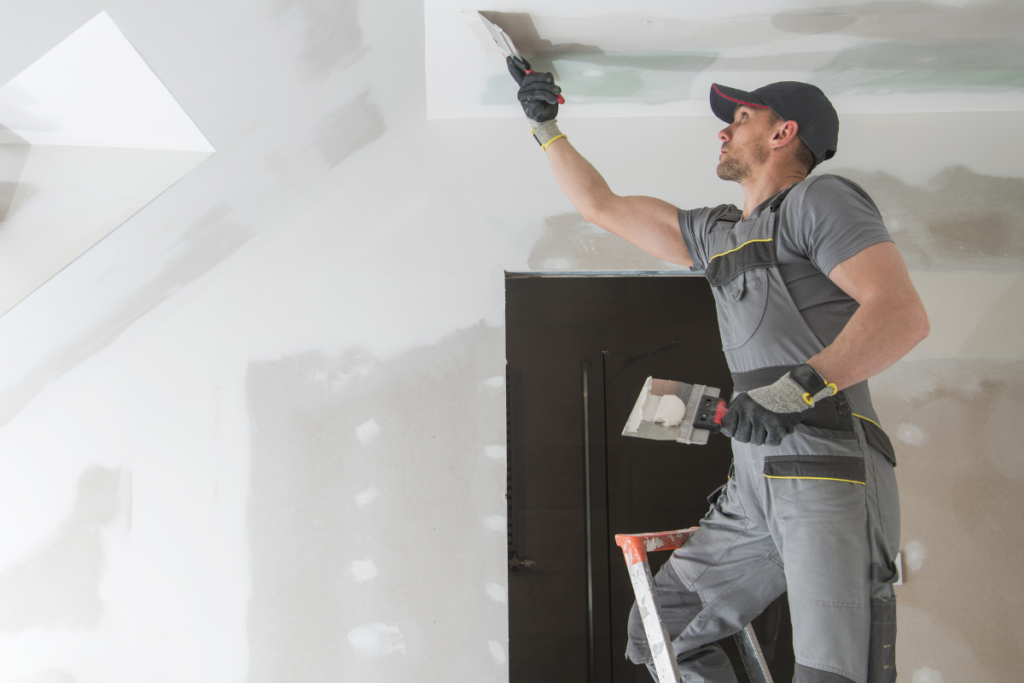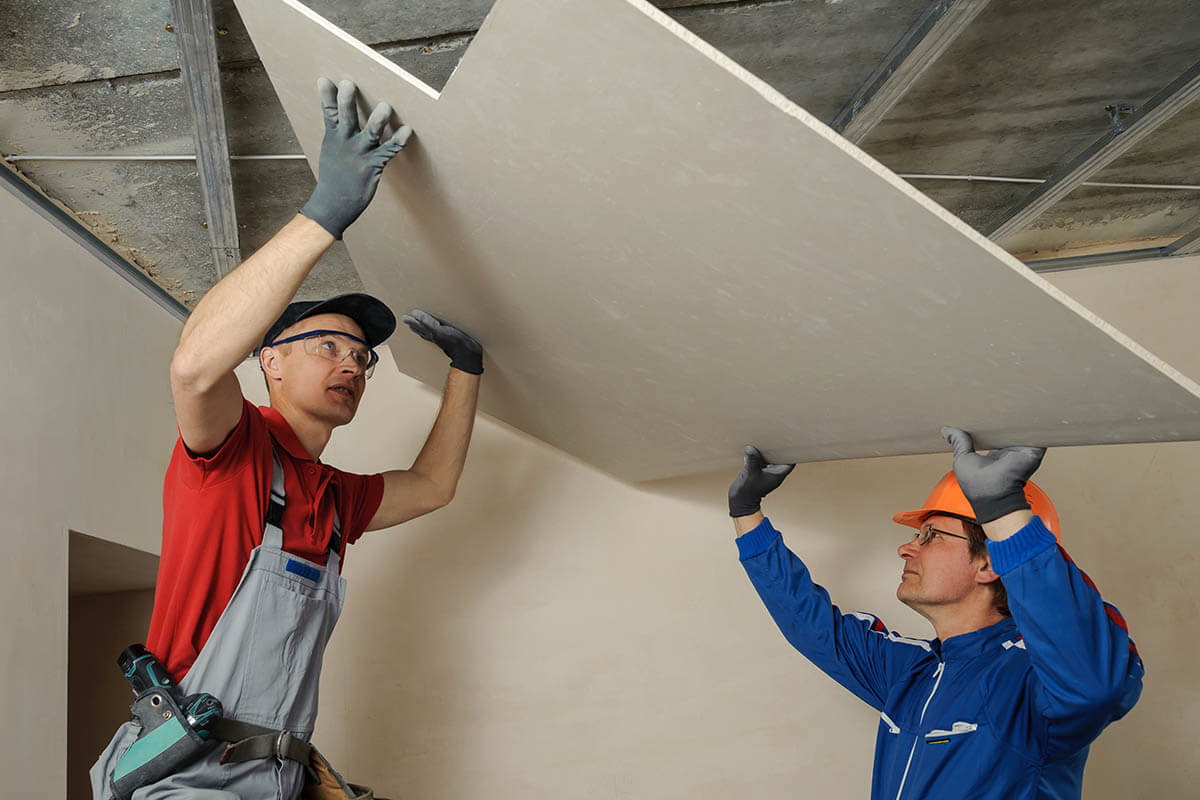Request Your Free Quote!

5 Signs You Need Professional Drywall Repair Drywall is a durable and versatile material, but over time, it can develop...

Drywall is one of the most common building materials used in homes today. While it’s durable and provides a smooth, clean finish for interior walls, it isn’t indestructible. Over time, everyday wear and tear, accidental impacts, or even structural shifts can cause damage that needs to be repaired.
Luckily, most drywall issues are fixable with the right tools and techniques. Whether you’re dealing with small dents, cracks, nail pops, or larger holes, this guide will walk you through the most common drywall problems and how to fix them—or when it might be best to call in a professional.
What’s Happening?
Small dents and dings are some of the most frequent drywall issues, often caused by minor accidents in high-traffic areas. These may not seem like a big deal at first, but if left unrepaired, they can make walls look worn and neglected over time. Fortunately, fixing them is quick and easy.
Causes:
How to Fix It:
What’s Happening?
Nail pops are small circular bumps that appear on walls or ceilings where drywall nails or screws start to loosen over time. They’re often caused by the natural expansion and contraction of a home’s wooden framing. While they may not indicate serious structural damage, they can create an uneven surface that affects the look of your walls.
Causes:
How to Fix It:
What’s Happening?
Drywall cracks often appear along door frames, windows, or ceilings, and they can be a sign of normal house settling or changes in temperature and humidity. While small cracks can be repaired easily, larger or recurring cracks may indicate deeper structural issues.
Causes:
How to Fix It:
What’s Happening?
Whether caused by an accidental impact, a doorknob hitting the wall, or the removal of old fixtures, medium-sized drywall holes can leave unsightly gaps in your walls. These holes are too big for simple spackling but can still be repaired relatively easily with a patch.
Causes:
How to Fix It:
What’s Happening?
Large drywall holes require more extensive repairs since they compromise the structural integrity of the wall. If not properly fixed, they can weaken the surrounding drywall and cause further damage over time.
Causes:
How to Fix It:
While minor drywall repairs can often be handled as a DIY project, some situations require expert help. Consider hiring a professional if:
At Just Like New Drywall Repair, we specialize in seamless drywall repairs that make your walls look brand new. If you need expert drywall repair in Orange County, contact us today for a free quote!
Learn more about Drywall Repair Services.
Keeping your drywall in top shape is key to maintaining your home’s appearance and value. Whether it’s a small dent or a major hole, knowing the right repair techniques can make all the difference. For homeowners looking for fast, professional service, Just Like New Drywall Repair is here to help.
📍 Serving Orange County, CA

5 Signs You Need Professional Drywall Repair Drywall is a durable and versatile material, but over time, it can develop...

How to Identify and Repair Water Damage in Drywall Water damage is one of the most common issues homeowners face,...

Drywall vs. Plaster – What’s the Difference and Which Is Better for Your Home? When it comes to interior walls,...

Drywall is one of the most common building materials used in homes today. While it’s durable and provides a smooth, clean finish for interior walls, it isn’t indestructible. Over time, everyday wear and tear, accidental impacts, or even structural shifts can cause damage that needs to be repaired.
Luckily, most drywall issues are fixable with the right tools and techniques. Whether you’re dealing with small dents, cracks, nail pops, or larger holes, this guide will walk you through the most common drywall problems and how to fix them—or when it might be best to call in a professional.
What’s Happening?
Small dents and dings are some of the most frequent drywall issues, often caused by minor accidents in high-traffic areas. These may not seem like a big deal at first, but if left unrepaired, they can make walls look worn and neglected over time. Fortunately, fixing them is quick and easy.
Causes:
How to Fix It:
What’s Happening?
Nail pops are small circular bumps that appear on walls or ceilings where drywall nails or screws start to loosen over time. They’re often caused by the natural expansion and contraction of a home’s wooden framing. While they may not indicate serious structural damage, they can create an uneven surface that affects the look of your walls.
Causes:
How to Fix It:
What’s Happening?
Drywall cracks often appear along door frames, windows, or ceilings, and they can be a sign of normal house settling or changes in temperature and humidity. While small cracks can be repaired easily, larger or recurring cracks may indicate deeper structural issues.
Causes:
How to Fix It:
What’s Happening?
Whether caused by an accidental impact, a doorknob hitting the wall, or the removal of old fixtures, medium-sized drywall holes can leave unsightly gaps in your walls. These holes are too big for simple spackling but can still be repaired relatively easily with a patch.
Causes:
How to Fix It:
What’s Happening?
Large drywall holes require more extensive repairs since they compromise the structural integrity of the wall. If not properly fixed, they can weaken the surrounding drywall and cause further damage over time.
Causes:
How to Fix It:
While minor drywall repairs can often be handled as a DIY project, some situations require expert help. Consider hiring a professional if:
At Just Like New Drywall Repair, we specialize in seamless drywall repairs that make your walls look brand new. If you need expert drywall repair in Orange County, contact us today for a free quote!
Learn more about Drywall Repair Services.
Keeping your drywall in top shape is key to maintaining your home’s appearance and value. Whether it’s a small dent or a major hole, knowing the right repair techniques can make all the difference. For homeowners looking for fast, professional service, Just Like New Drywall Repair is here to help.
📍 Serving Orange County, CA

5 Signs You Need Professional Drywall Repair Drywall is a durable and versatile material, but over time, it can develop...

How to Identify and Repair Water Damage in Drywall Water damage is one of the most common issues homeowners face,...

The Most Common Drywall Repairs and How to Fix Them Drywall is one of the most common building materials used...

